6 Types of Stormwater Drainage Systems and Their Pros and Cons
Protect your home from stormwater damage with proper drainage systems


Our home is a vessel that allows us to weather through life’s storms, but it’s a different story if your house is sitting in stormwater like an actual boat. Stormwater can damage foundations, exterior walls, and even interior structures, and familiarizing yourself with types of stormwater drainage systems will help you safely navigate through the storm seasons.
1. Ditches and Swales
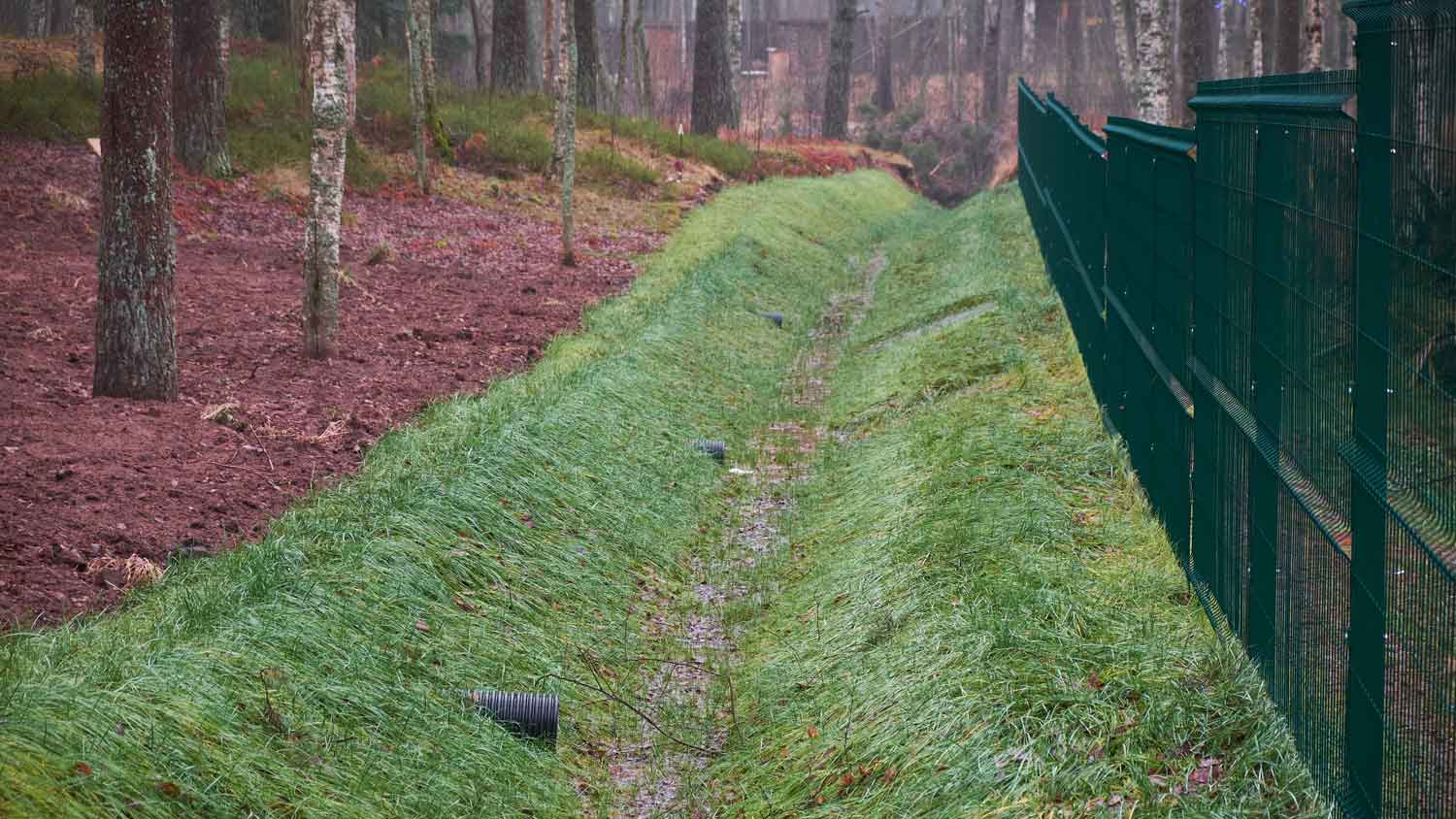
Ditches and swales are open-channel systems designed to quickly move stormwater off the roads. Ditches are V-shaped open channels often seen on roadsides in the grass. They’re also the easiest types of stormwater drainage systems if you want to DIY something at home. Meanwhile, swales must have a specific slope and bottom width and only work on certain soil types.
Average cost: $250 to $1,000
Pros
Convenience and simplicity: Ditches are easy to build at home and require no specific tools.
Easy maintenance: Since these are open drainage systems, they’re much easier to clean and maintain.
Cons
Easily disrupted: Large debris carried by rainwater can make ditches and swales non-functional. Fallen branches can also block the drainage system and cause an overflow.
Safety hazard: Ditches are less effective during the winter. They can also freeze if water doesn’t drain in time, potentially leading to injuries.
Lack of sustainability: Harmful chemicals from the stormwater directly enter the soil, damaging the environment.
2. Catch Basins

Catch basins connect to your local sewage system and are most commonly seen along roads on the curb. They’re often protected by grids, grates, and filters to keep large debris out. Stormwater enters a filtration tank, where dirt, grime, and other harmful pollutants settle at the bottom while clean water enters the pipelines.
Average cost: $1,000 to $4,000
Pros
Sustainability: Catch basins filter the stormwater to minimize pollution.
Better protection: The grid or grate prevents large debris from passing through.
Higher capacity: With an underground water filtration tank, catch basins are very efficient and can handle a high water volume.
Cons
Pest infestation: Catch basins tend to become a breeding ground for pests and rodents.
Backflow issues: Catch basins may get clogged and backflow if the system doesn’t have enough time to transport the stormwater into the sewage system.
Odors: As rotten leaves and other pollutants build up, catch basins may begin to stink.
3. French Drains
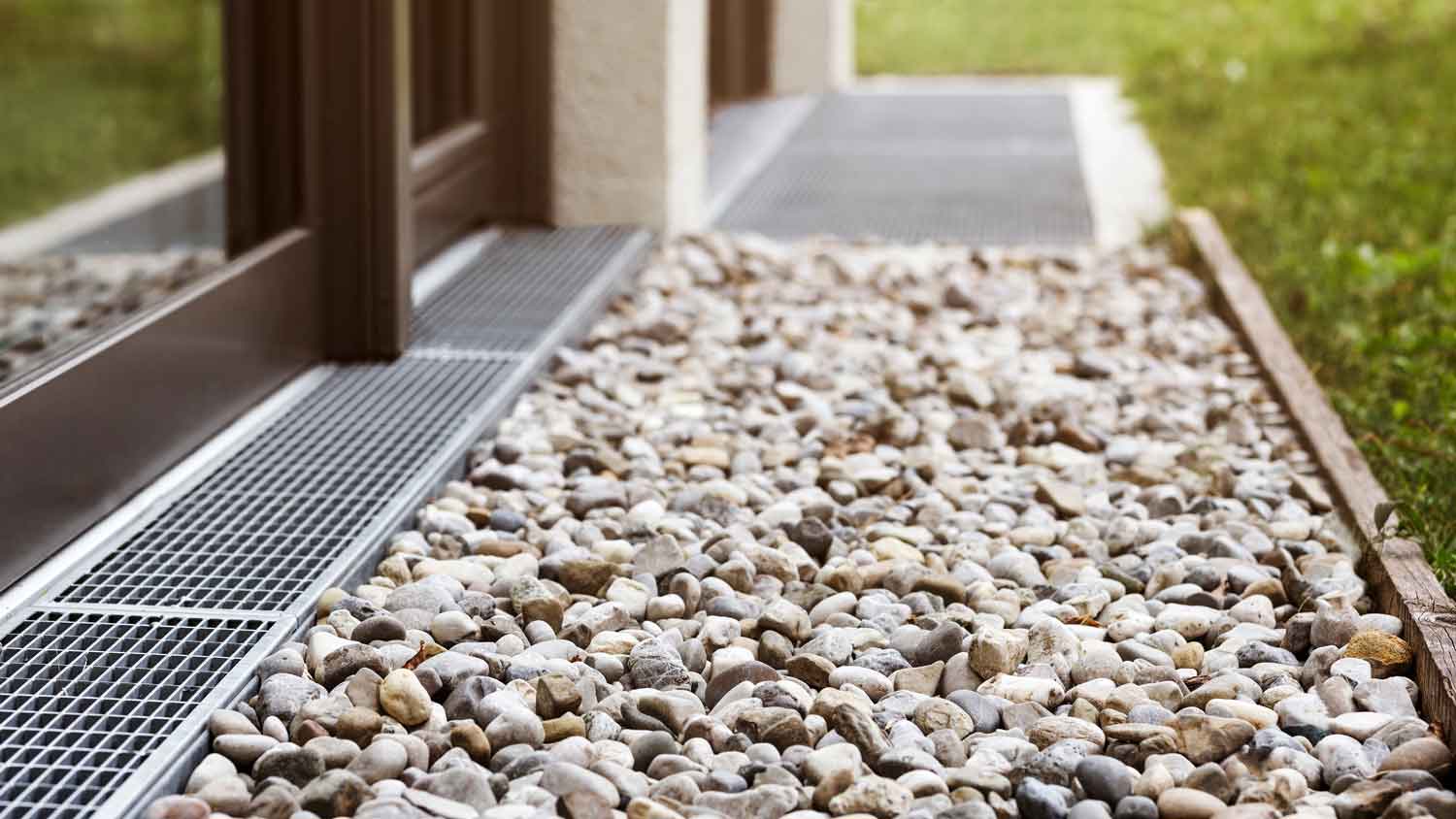
French drains are perfect for keeping stormwater away from your foundation. The system utilizes small grates near the property’s foundation as funnels to lead rainwater into a long pipe to the other end and into another system connected to the underground sewage or a pond. Consider calling a drainage system contractor who can help you protect your home from water intrusion with a French drain installation.
Average cost: $500 to $18,000
Pros
Efficiency: French drains are one of the most effective stormwater drainage systems.
Longevity: French drains can last 30 to 40 years.
Aesthetics: Most people can camouflage the drainpipe with plants, pebbles, or decorative grates.
Cons
Structural change: You may need to remove existing structures, such as a walkway or deck, to put the drainage system in. It can also be dangerous digging around power and communication lines.
Costly installation: French drain installation requires a professional and is one of the more expensive types of stormwater drainage systems to build.
Doesn’t work well with light rain: French drains can increase the hydroponic pressure on your concrete and damage your foundation if you live somewhere that only gets light rain.
4. Slot Drains
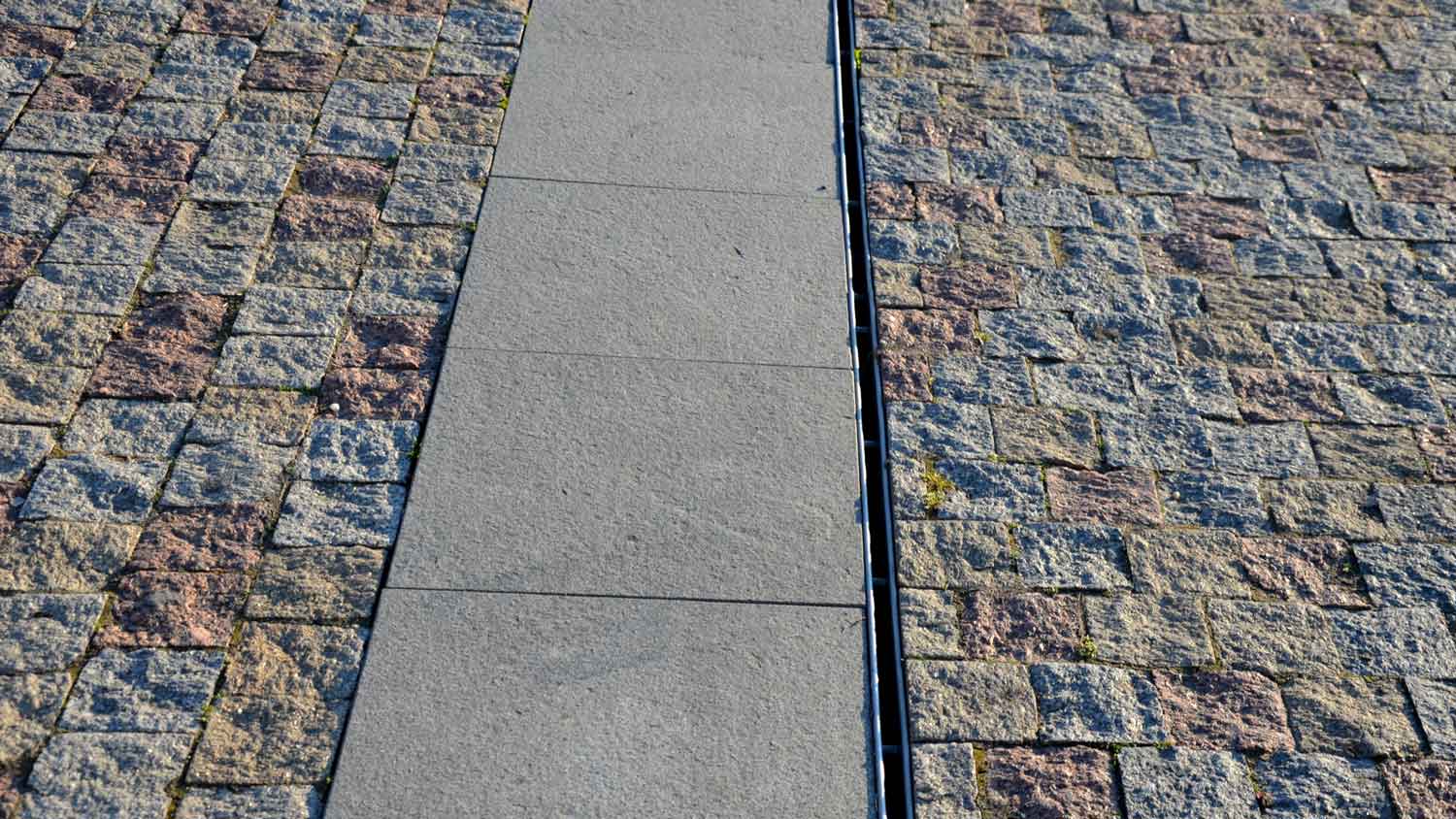
Slot drains are newcomers to the stormwater drainage system family. As the name suggests, slot drain systems use one or multiple slim openings with a catch basin underneath. Since the openings are so small, slot drains don’t require a grate cover, providing a minimal, less obtrusive look.
Average cost: $30 to $100 per linear foot
Pros
Industrial strength: Slot drains are perfect for roads and driveway drainage solutions since they don’t bend or break under high pressure.
Easy maintenance: Slot drains are low maintenance and easy to clean.
Less likely to clog: The slim opening prevents most debris from entering the system.
Cons
Low capacity: Slot drains flood easily, even with a multi-drain system. Thus, they’re best used in places that only get light rain.
5. Permeable Pavement
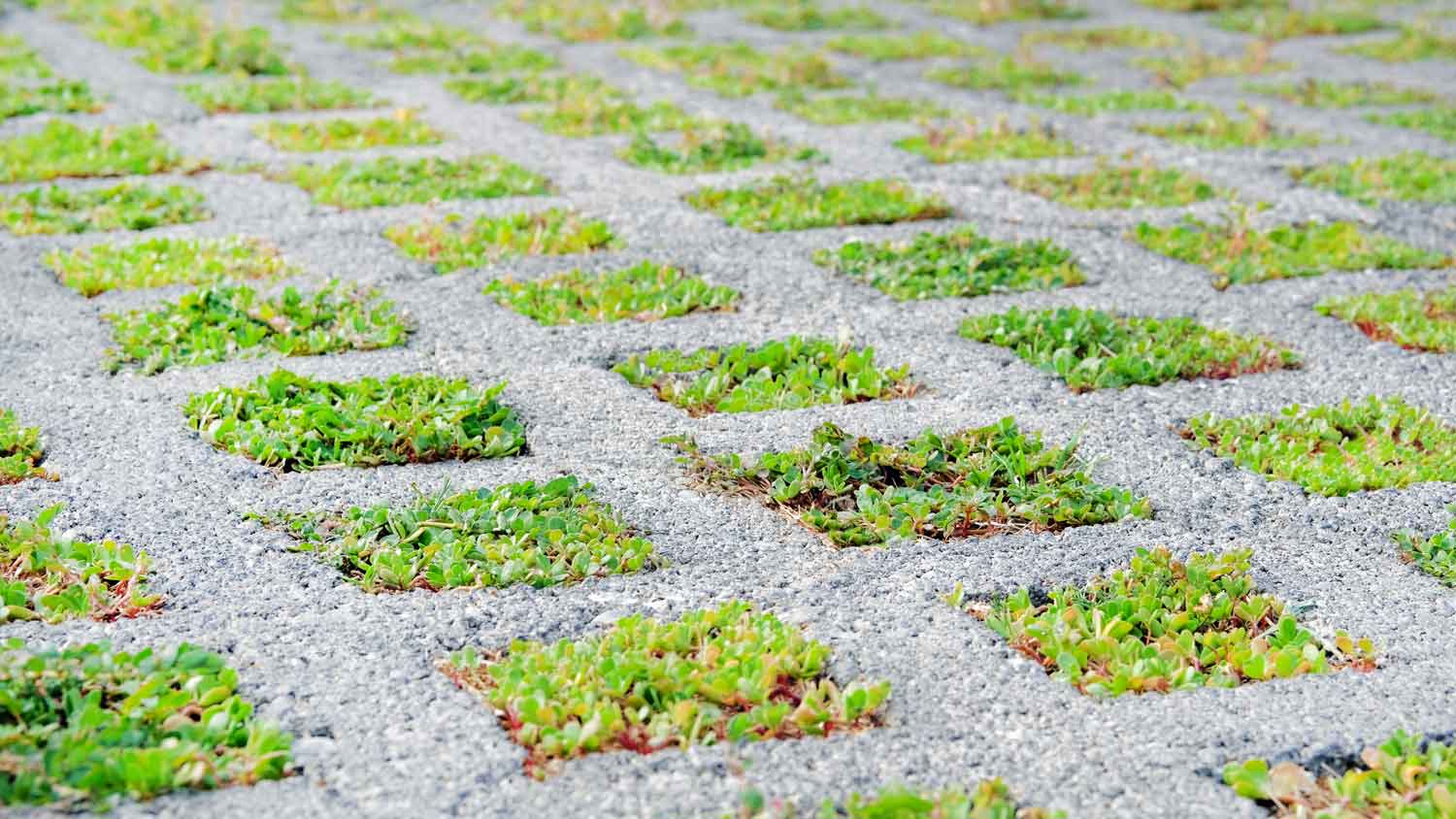
Permeable pavement uses porous material to turn the entire pavement surface into a stormwater drainage system. Permeable pavement is similar to the standard pavement you see on roads, but it’s full of holes to allow water to pass through. A reservoir underneath the pavement collects excess water as the earth below slowly absorbs it.
Two commonly used permeable pavement materials are porous asphalt and porous cement, and both can be found at your local hardware store or purchased directly from manufacturers online.
Average cost: $8 to $30 per square foot
Pros
Highly effective: Permeable pavement can effectively drain a large amount of stormwater, even during the most extreme weather.
Higher functionality: This drainage system is both walkable and driveable.
Cons
High cost: Permeable pavement is one of the most expensive stormwater drainage systems
Not as strong as traditional pavement: Though you can still walk and drive on it, permeable pavement doesn’t have the long-term durability of non-porous pavement material.
6. Rain Garden
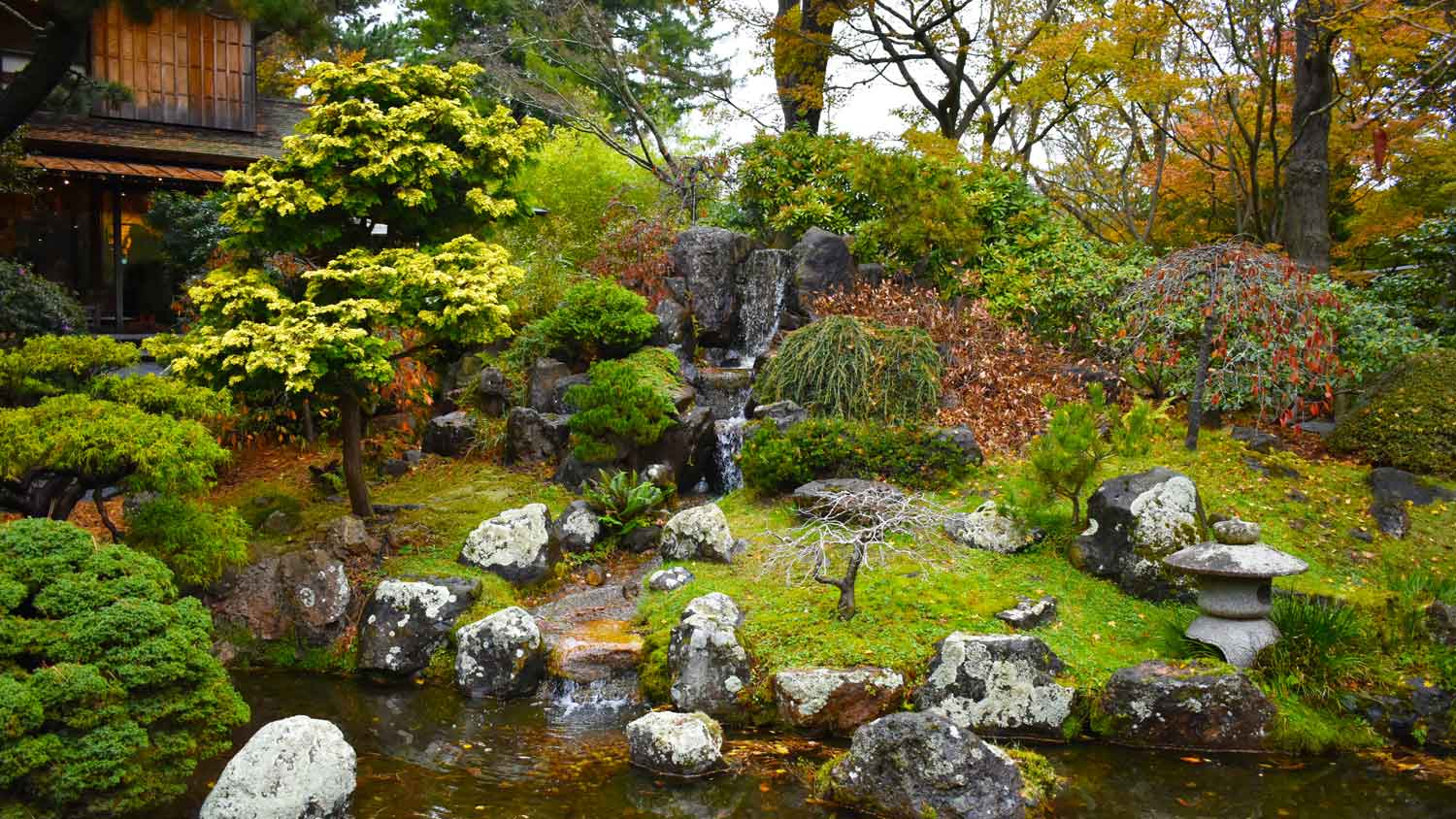
A rain garden is an area in a landscape that sits lower than the surrounding earth. Its purpose is to give rainwater, often from downspouts, a safe place to collect while it drains. People often place river rocks in these gardens for drainage and plant water-tolerant flora in them, too, giving the excess rain a purpose beyond just soaking into the ground.
Many areas have requirements for the size and positioning of rain gardens. For example, in Portland, Oregon, rain gardens must be at least 10% the size of your roof and located at least 10 feet away from nearby structures, according to the City of Portland, Oregon.
Average cost: $4 to $30 per square foot
Pros
Cost-effective: More affordable than most residential stormwater drainage systems.
Easy to build: Rain gardens are fun, easy weekend DIY projects.
Aesthetics: Rain gardens are pleasant to the eye, offering you a chance to hone your gardening skills.
Cons
Low capacity: Rain gardens can flood easily during storms with heavy rainfall.
High maintenance: Rain gardens and their surrounding areas require regular landscaping and maintenance to ensure proper drainage.
No filtration: Rain gardens are only suitable for water with low contamination levels.
Stormwater System Maintenance Tips
Maintaining your stormwater system will help you ensure you won’t have any unexpected flooding and related problems in case of a severe weather event. Here are some tips based on the system you have:
| Type of Stormwater Drainage System | Maintenance Tips |
|---|---|
| Ditches and swales | Mow, remove loose vegetation and debris, and fix eroded areas |
| Catch, French, and slot drains | Regularly clear debris from drains and use a pressure washer to unclog as necessary |
| Rain garden | Water, weed, mulch, and maintain plants and trees |
Who to Hire to Build Stormwater Drainage Systems
Depending on the type of stormwater drainage systems you choose, you could handle the project by yourself. However, you should hire a professional for more advanced drainage systems, such as catch basins, slot drains, or French drains. For permeable pavement projects, you will need a paver or driveway contractor instead of a drain contractor.
Finding the Right Pro
Take the following aspects into account when looking for a contractor:
Distance: Are you in their service area, or would there be an additional fee for the contractor to come to you? It’s usually best to go with a local storm drain contractor.
Experience: How experienced are they? Are they familiar with installing the type of stormwater drainage system you need?
Insurance: Is the company properly insured?
Reviews: Always check past customer reviews.
Cost: Is the labor cost within your budget? Is it a fair price, considering their expertise?
Frequently Asked Questions
Installing storm windows can protect your home’s interior from heavy storms. Most storm windows are made with enamel-coated aluminum with screens and sliding glass panels. They also make your house more energy-efficient. The average storm window cost is $12,000, ranging between $4,250 and $19,850, depending on mounting, window types, glass types, and frame materials.
The four most common types of stormwater drainage systems are ditches, catch basins, french drains, and slot drains. Ditches are open trenches designed to reroute stormwater off your property. Catch basins are connected to your local sewage system. French drains are great for keeping water out of your foundation, and slot drains are low-capacity drain systems that work best with light storms.
The type of stormwater drainage system you need depends on your area’s storm severity and frequency. Your property’s location should also be considered, including the surrounding soil type, nearest roads, existing drainage systems, and slopes and hills. Your property’s structure, such as decks, walkways, crawl spaces, and foundation, also affects what drainage system will work the best.
Building a traditional exterior stormwater drainage system ranges from $600 to $15,000. Therefore, ensure you know which type of stormwater drainage system is the most suitable for your property. Basic open trench or channel drains cost $30 to $100 per linear foot, whereas concealed systems tend to be pricier.
- Driveway Drainage Solutions: 6 Ways to Prevent Water Issues
- 13 Yard Drainage Ideas to Turn a Flooded Lawn Into a Healthy Landscape
- 15 Wise Ways to Prevent Water From Flooding Your Yard
- Permeable Driveway Options: What Are The Best Materials?
- 7 Reasons Why Water Is Rising Through Your Floor—And How to Fix Them
- How Deep Is a French Drain?
- What Is Permeable Paving? Everything You Need to Know
- 5 Best Driveway Material Options and How to Choose the Best One
- Installing Pavers? Here’s What You Need to Know About Drainage
- What’s the Difference Between a Trench vs. a Ditch?










